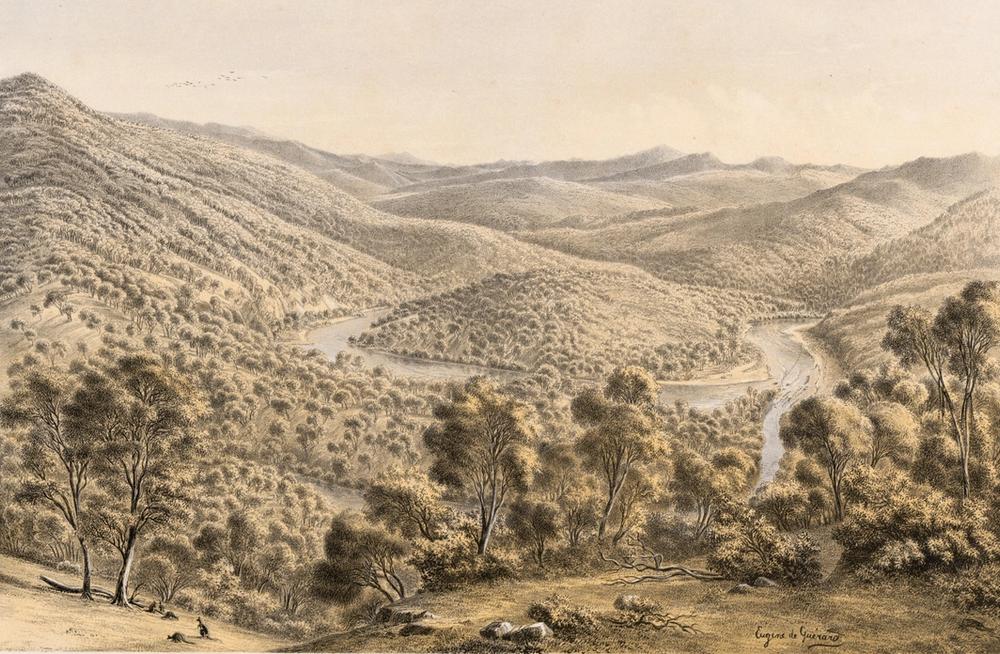
1866 - Junction of the Buchan and Snowy Rivers, Gippsland, Victoria
Eugene von Guerard
Habitat: East Gippsland Uplands - Valley Grassy Forest1
Depleted 67% remaining2
Coloured lithograph (Plate IX in Australian Landscapes)
H 39.2 x W 58.9 cm
The University of Tübingen
libraryofnature.com
Bioregion: South East Corner (37% protected)3
A series of deeply dissected near coastal ranges composed of Devonian granites and Palaeozoic sediments, inland of a series of gently undulating terraces (piedmont downs) composed of Tertiary sediments and flanked by Quaternary coastal plains, dunefields and inlets. The regional climate is strongly influenced by the Tasman Sea and the close proximity of the coast to the Great Dividing Range. Vegetation consists of high elevation woodlands, wet and damp sclerophyll forests interspersed with rain-shadow woodlands in the Snowy River Valley. Lowland and coastal sclerophyll forests, woodlands, warm temperate rainforest and coastal communities occur in the lower areas.4
Eugene von Guerard5
Johann Joseph Eugene von Guérard (17 November 1811 – 17 April 1901) was an Austrian-born artist, active in Australia from 1852 until 1882. Known for his finely detailed landscapes in the tradition of the Düsseldorf school of painting, he is represented in Australia's major public galleries, and is referred to in the country as Eugene von Guerard.
In 1852 von Guerard arrived in Victoria, Australia, determined to try his luck on the Victorian goldfields. As a gold-digger he was unsuccessful, but he did produce a large number of intimate studies of goldfields life, quite different from the deliberately awe-inspiring landscapes for which he was later to become famous.
By the early 1860s von Guerard was recognised as the foremost landscape artist in the colonies, touring Southeast Australia and New Zealand in pursuit of the sublime and the picturesque. He is most known for the wilderness paintings produced during this time, which are remarkable for their shadowy lighting and fastidious detail. Indeed, his view of Tower Hill in south-western Victoria was used as a botanical template over a century later when the land, which had been laid waste and polluted by agriculture, was systematically reclaimed, forested with native flora and made a state park.
Artwork of species found nearby

See more »
1854 - Superb Fairywren
Elizabeth Gould

See more »
1854 - Scarlet robin
Elizabeth Gould

See more »
1854 - Superb Fairywren
Elizabeth Gould

See more »
1854 - Rose robin
Elizabeth Gould

See more »
1854 - Eastern Yellow Robin
Elizabeth Gould

See more »
1851 - Superb Lyrebird
Elizabeth Gould